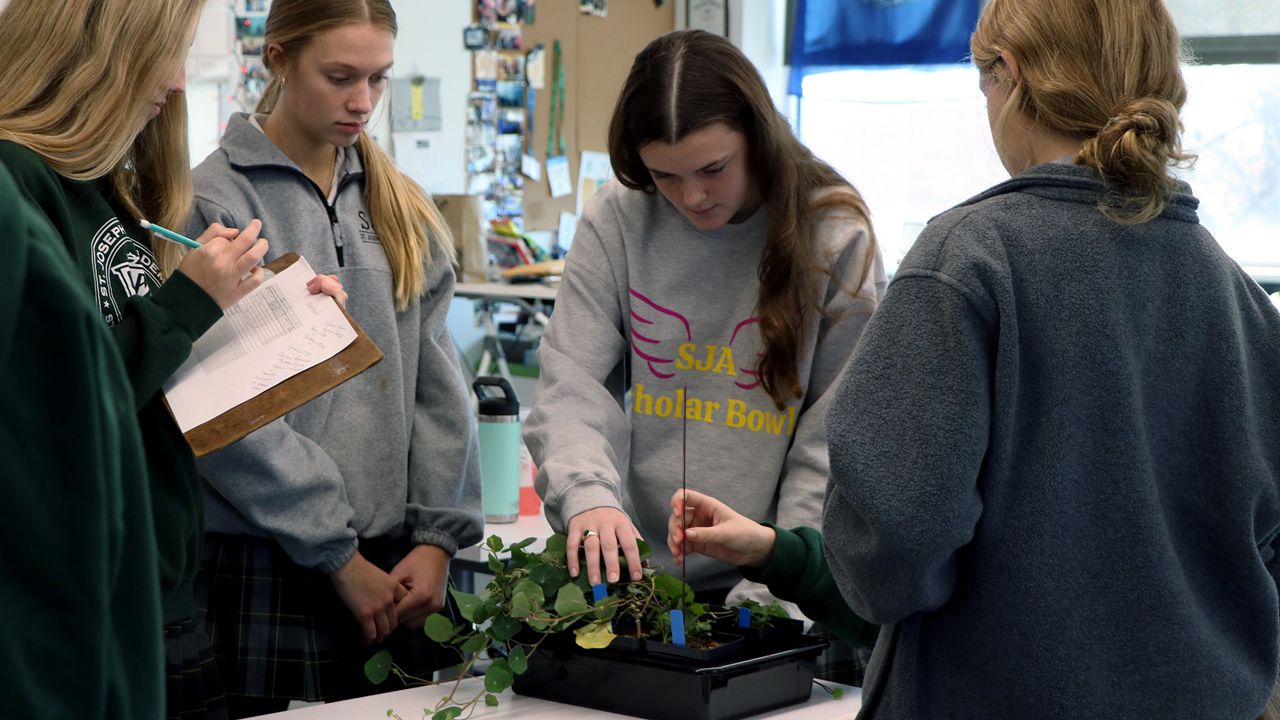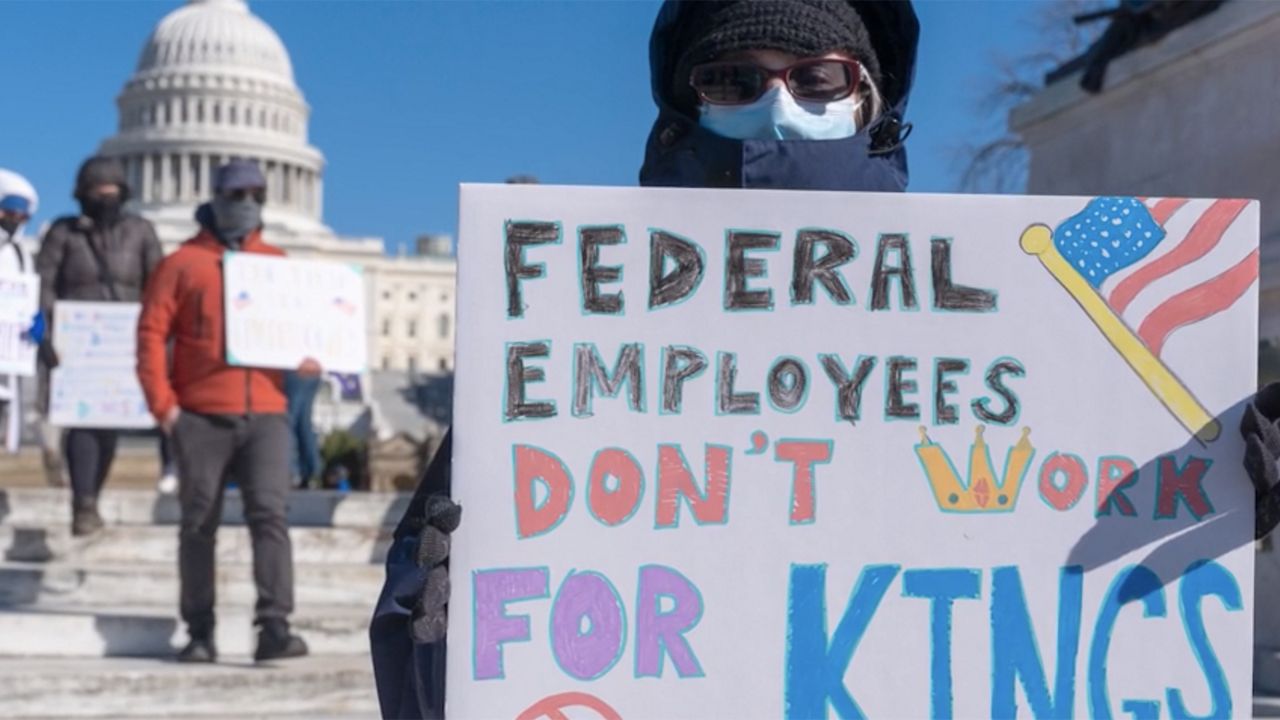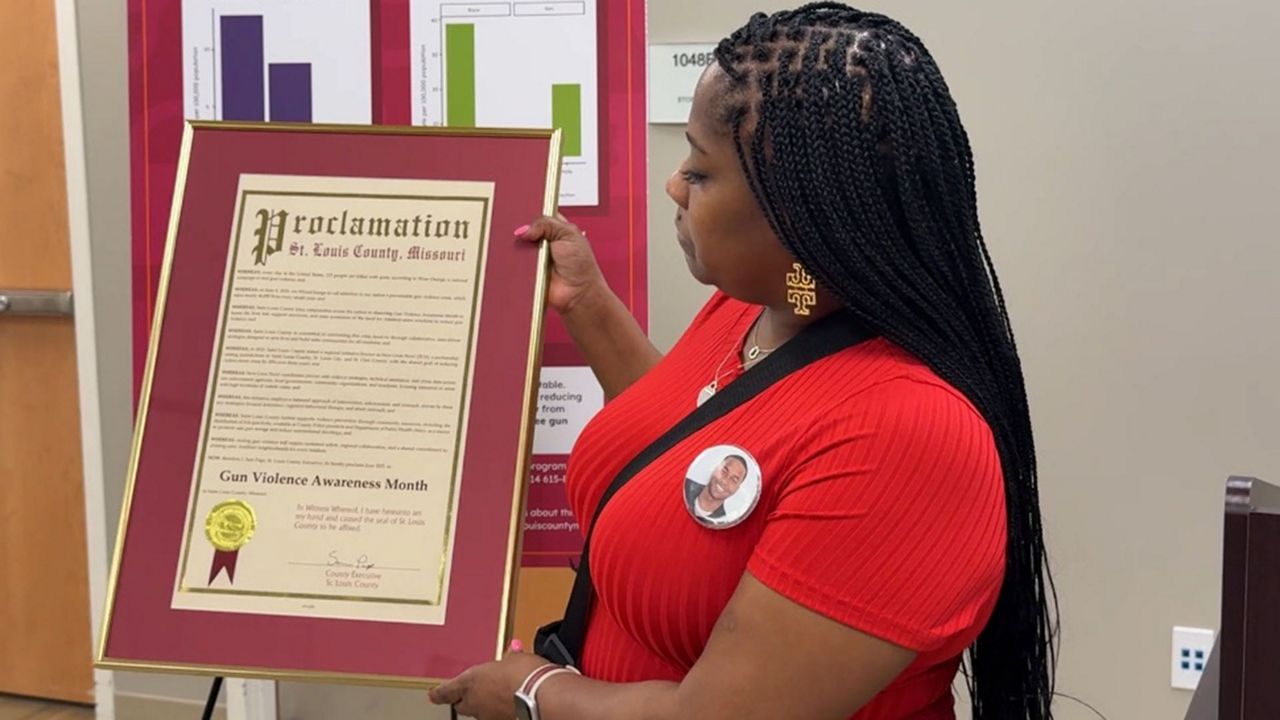ST. LOUIS — Honors biology students at St. Joseph’s Academy are helping NASA researchers collect data on food production in space.
It’s part of Growing Beyond Earth (GBE), a free, multi-classroom science project designed to advance NASA research on growing plants in space. Established in 2015, GBE is a partnership between Fairchild Tropical Botanic Garden in Florida and NASA’s Exploration Research and Technology Programs.
Currently, more than 400 middle and high schools across 48 states and eight countries participate in GBE. Teachers are trained to conduct in-classroom GBE experiments with students and share experimental data online with NASA.
Led by science teacher Katie Lodes, students in her freshmen honors biology class are testing several varieties of herbs for possible cultivation aboard the International Space Station (ISS).
This is Lodes’ fourth year of guiding her students on a GBE project. In the past, she said they have grown different types of lettuce and radishes.
“It’s just a great way to get involved in science that means something,” Lodes said.
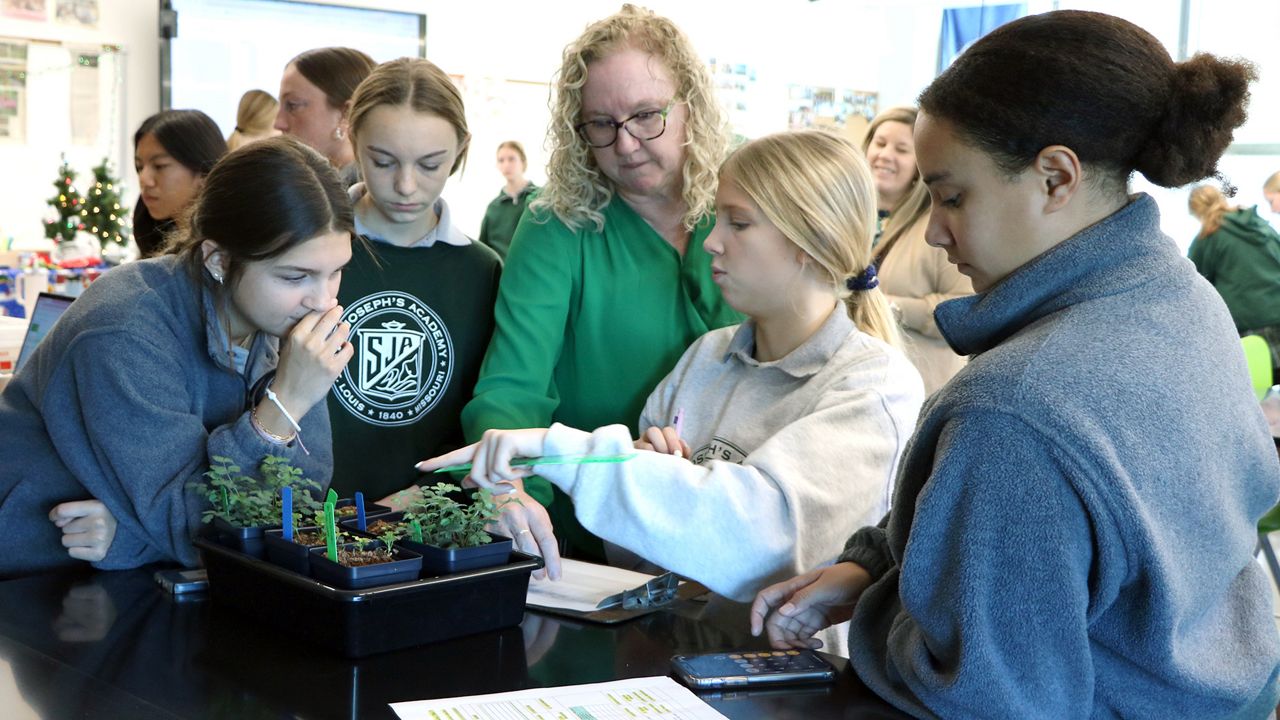
This semester involves growing herbs such as basil, cilantro, chervil, salad burnet, purslane, among others, inside a high-tech portable greenhouse chamber, which has been a seven-week process, according to Lodes.
Students follow research and trial protocols provided throughout the process.
The greenhouses, which mimics the one used on the ISS, are equipped with an LED light panel, box sides and connectors, fertilizer, pots, seeds, a light timer, hygrometer/thermometer, a tray, a wicking mat, plant tags, a fan and finger guard.
The high-tech portable greenhouses are manufactured locally in Overland by a company called MARSfarm.
“We are really interested in improving the quality of project-based learning in urban areas and giving kids real world use-cases of careers where they can make an impact on climate,” co-founder Peter Webb said.
Each week, students record data on how fast and how well the herbs are growing, and how much light and water they need to survive. The information is entered into a spreadsheet.
“I like experimenting with different things that might affect the plant growth, like the lights. I never knew that the different colored lights could affect the plant growth,” freshman Lilly Ringhofer said.
Students said they feel important that they are contributing to NASA research.
Next semester will involve experimenting with the herbs by manipulating variables such as water, light or humidity. One greenhouse chamber will be the control and another will be the variable.
Students are learning why it is important to have fresh food in space and what is the best and fastest way to grow plants in space with the least number of resources, according to Lodes.
“It fits seamlessly into our curriculum,” she said. “Just gardening in general isn’t something that’s been in the curriculum and so it’s hard to grow things and to actually make it meaningful.”
“And this also helps them understand how science works.”
In the spring, the students will present their data and analysis to NASA scientists during a symposium.
“It’s great experience,” Lodes said. “They’re glowing when it’s over because they do a great job.”
With a purpose of creating instructions for growing plants, Webb got his start by writing assembly guides of portable greenhouses designed by a group at MIT.
Webb and his friend Drew Thomas then developed a cheaper, DIY version to sell, which were bought by teachers.
With positive feedback and interest, Webb and Thomas went into business.
In 2018, the company received a St. Louis Earth Day Action Grant from the St. Louis Science Center where MARSfarm had its Version 0.1 on display. Webb and Thomas continued to modify and improve the portable greenhouse product into MARSfarm Version 1, which is now their flagship product.
The computerized portable greenhouse has a circulation fan, a heater, sensors for CO2, humidity and temperature, a high resolution camera and four spectrum LED lights.
MARSfarm caught the attention of Fairchild Tropical Botanic Garden a few years ago and partnered together to provide greenhouses for the GBE program.
Webb said GBE is a good way to reach agriculture communities where students can learn science principles, as well as show students who are interested in science and math that agriculture can be a career path.
“There are a lot of people that want to make an impact on food and climate in urban areas, so how do you take that energy and apply that towards figuring out how to grow plants better in the future,” he said.
The partnership with GBE has gotten a lot more MARSfarm greenhouses in schools nationwide, according to Webb, who said the company also has international customers in China, Australia, Turkey, South Africa and more.
In the St. Louis area, MARsfarm customers include MIDCS, St. Joseph’s Academy, Parkway West, Ranken, St. Charles Community College and Freeburg High School, according to Webb, who said he would like to expand into more local schools.
Other than using the portable greenhouses as a teaching tool, Webb said he wants to develop a portable greenhouse for consumers that would grow plants with not much effort.
Learn more about MARSfarm here.
St. Joseph’s Academy has multiple MARSfarm greenhouses thanks to additional funding, which are being used for senior level honors projects.
Bailey Bryan is looking at how different amounts of chemical and mineral sunscreens impact zooxanthellae, micro-organisms that inhibit coral.
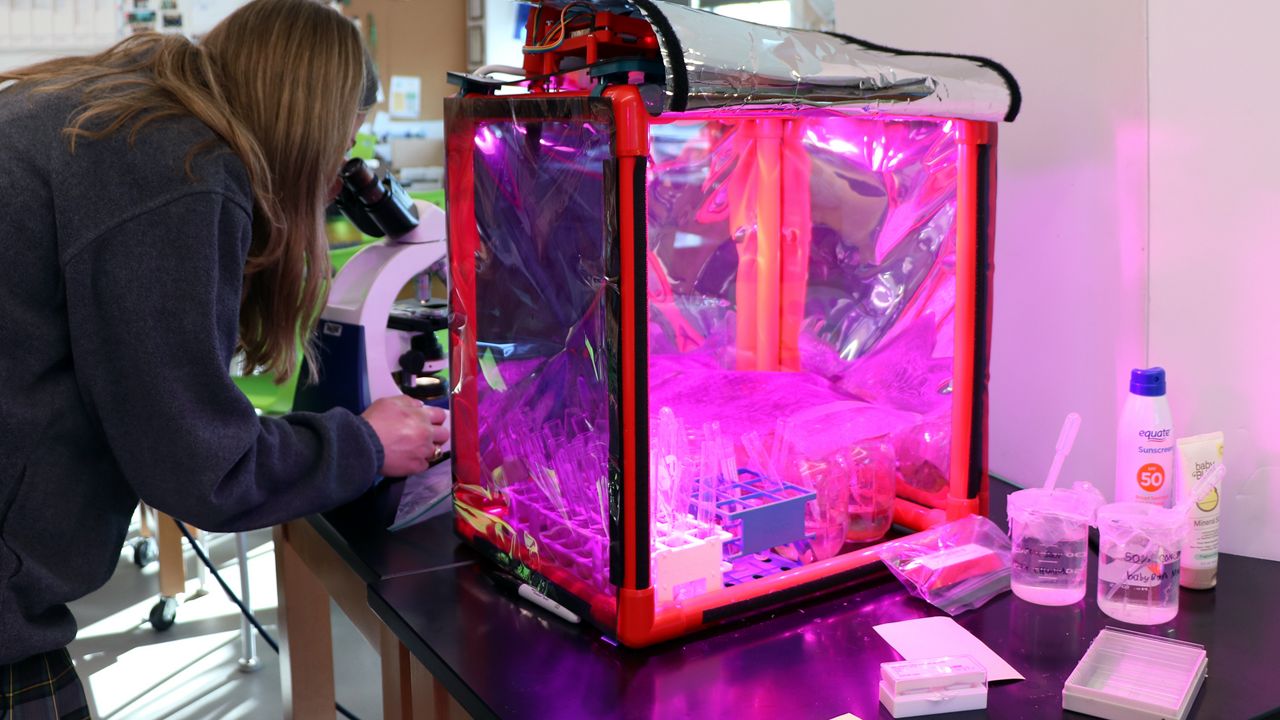
“One of the big problems right now environmentally is that consumer sunscreens are having a negative impact on coral reefs, which are already facing significant damage from rising CO2 levels in the ocean,” Bryan explained.
She is using the MARSfarm greenhouse for its lighting, temperature, camera, and data collection features.
“Having this chamber and being able to have the data live at all times has been great, so I can get specific temperatures,” Bryan said.
“It’s going to be helpful once I go into my data analysis portion of my project and I can be looking at the dates in combination with the pictures and microscopic images taken.”
In February, Bryan will present her project at the Ocean Sciences Meeting 2024 held in New Orleans and then compete in the St. Louis Honors Fair in March.
“Without these chambers and the correct lighting, this would not be possible,” Lodes said.




